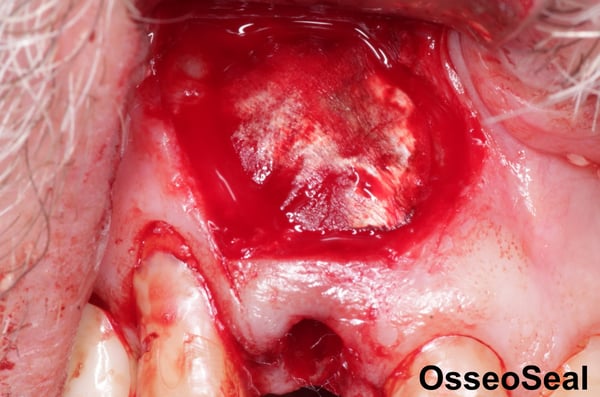There are so many options when it comes to barrier membranes for Guided Bone Regeneration procedures. Even within resorbable collagen membranes, the range of options is huge. Aside from the composition and processing that occurs in the manufacturing phase, the physical and handling characteristics can make the difference between a smooth surgery and a laborious procedure.
For example, look at the difference in the pictures below, between Biomend (Type I Bovine Collagen Membrane, equivalent to Neomem) and OsseoSeal when it comes to repairing fenestration defects. Biomend is a Type I bovine collagen membrane, while OsseoSeal is derived from purified porcine pericardium.
In both of these cases, there was a fenestration defect from an extraction socket which was accessed and regenerated. By comparing the photos we can see how different each membrane behaves. The OsseoSeal membrane was easily adapted and contoured over the graft and adjacent bone in an intimate fashion once it became wet with blood. The Biomend, being much more stiff, was difficult to use in this situation. It refused to contour over the graft and bone and instead retained its flat shape despite being soaked in blood. This made it difficult to position and keep in place (note the mattress sutures employed for the sake of holding down the membrane). Biomend, or other Type I bovine collagen membranes, might be a better option in a different situation where it is necessary to have rigidity, despite being wet.
How do you like your membranes: stiff or flexible? Or does it depend on the situation?

